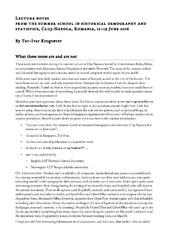| dc.contributor.advisor | Bones, Stian | |
| dc.contributor.author | Misund Domaas, Christel | |
| dc.date.accessioned | 2019-09-02T08:20:07Z | |
| dc.date.available | 2019-09-02T08:20:07Z | |
| dc.date.issued | 2019-05-29 | |
| dc.description.abstract | The Norwegian-British-Swedish Antarctic Expedition (NBSX) was the first multilateral expedition to the Antarctic regions and marked the beginning of an era of collaboration in Antarctic policy. Envisioned by Hans Wilhelmsson Ahlmann, as a means to expand his research into global melting and glacial retreat into the Southern hemisphere, and planned by the Norwegian Polar Institute under Harald Ulrik Sverdrup, it set off to the Dronning Maud Land in 1949 and returned home in 1952. While stationed in the Antarctic territory claimed by Norway, the crew led by John Giæver set up their basecamp "Maudheim" and performed plethora of scientific experiments and surveys. In the politically fraught post-war period, motives other than collaboration and science were pushed back in order not to stir smouldering conflict. This thesis seeks to disentangle and illuminate the tightly interwoven web of motives that drove the expedition into being. It tightly follows the expedition from its conception, throughout the laborious planning and funding process, it’s set-off and return and aftermath. The reader will see that while scientific discovery and knowledge seeking was taking up a primary role in the minds of many of its “fathers”, other motives, such as severity in the Arctic, access to weather data, whaling grounds and resources as well as military training and territorial control were driving factors in the realisation (and especially the funding) of the NBSX. Furthermore, it is shown how the planning and execution of the expedition became the driving factor for the establishment of the Norwegian Polar Institute and, simultaneously, its first gauge of efficiency. | en_US |
| dc.identifier.uri | https://hdl.handle.net/10037/16047 | |
| dc.language.iso | eng | en_US |
| dc.publisher | UiT Norges arktiske universitet | en_US |
| dc.publisher | UiT The Arctic University of Norway | en_US |
| dc.rights.accessRights | openAccess | en_US |
| dc.rights.holder | Copyright 2019 The Author(s) | |
| dc.rights.uri | https://creativecommons.org/licenses/by-nc-sa/4.0 | en_US |
| dc.rights | Attribution-NonCommercial-ShareAlike 4.0 International (CC BY-NC-SA 4.0) | en_US |
| dc.subject.courseID | HIS-3900 | |
| dc.subject | VDP::Humaniora: 000::Historie: 070::Politisk historie: 071 | en_US |
| dc.subject | VDP::Humanities: 000::History: 070::Political history: 071 | en_US |
| dc.subject | VDP::Humaniora: 000::Historie: 070::Moderne historie (etter 1800): 083 | en_US |
| dc.subject | VDP::Humanities: 000::History: 070::Modern history (after 1800): 083 | en_US |
| dc.subject | VDP::Humaniora: 000::Historie: 070::Annen historie: 089 | en_US |
| dc.subject | VDP::Humanities: 000::History: 070::Other history: 089 | en_US |
| dc.subject | Ekspedisjon | en_US |
| dc.subject | Expedition | en_US |
| dc.subject | Antarktis | en_US |
| dc.subject | Antarctica | en_US |
| dc.subject | klimaforandringer | en_US |
| dc.subject | climate change | en_US |
| dc.subject | Vitenskap | en_US |
| dc.subject | science | en_US |
| dc.subject | Politikk | en_US |
| dc.subject | politics | en_US |
| dc.title | The Norwegian-British-Swedish Antarctic Expedition. Science and politics | en_US |
| dc.type | Master thesis | en_US |
| dc.type | Mastergradsoppgave | en_US |


 English
English norsk
norsk



